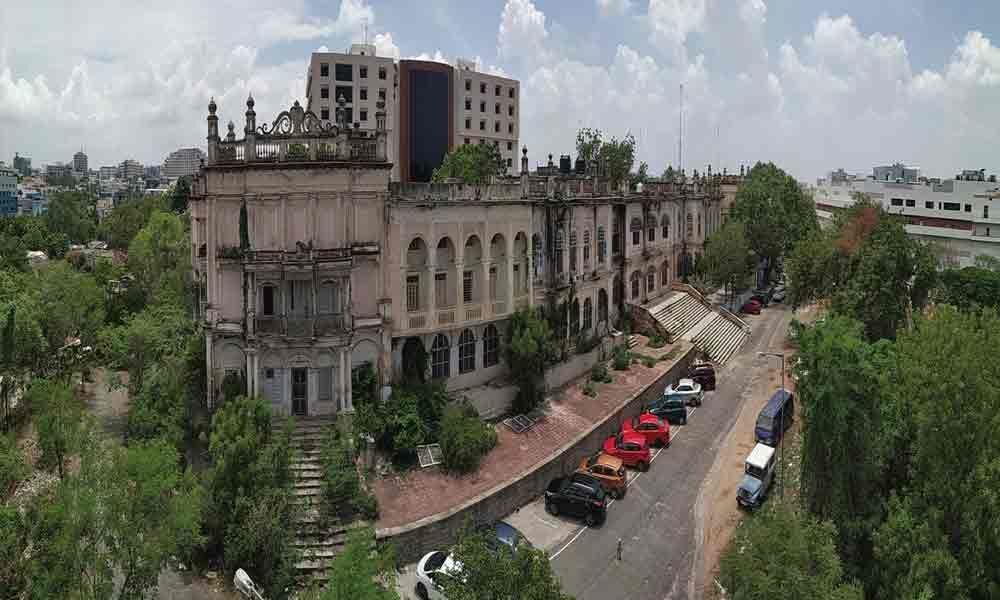Live
- RRR Custodial Torture: Ex cop Vijay Paul arrested
- Record 4.49 million PCs sold in India in Q3
- CM presents Rs 12K cr supplementary budget
- 40 elephants, 5 leopards died in 5 months: Minister
- ECoR felicitates 3 employees for alertness
- Constitution has given equal rights to all: CM
- Two officials held for collecting money from trucks on NH
- Uphold principles of Constitution: CM Naidu
- Majhi bats for disaster-resistant infra
- Grand Celebration of Constitution Day at District Police Office
Just In
When heritage got richer with Nawabi quest for status


L’affaire Errum Manzil is now well and truly a hot potato in the political circles of Hyderabad with KCR’s grand ambitions of constructing a spanking new edifice in its place being met with increasing opposition by an army of conservationists, descendants of the original builder and his political rivals.
Hyderabad: L'affaire Errum Manzil is now well and truly a hot potato in the political circles of Hyderabad with KCR's grand ambitions of constructing a spanking new edifice in its place being met with increasing opposition by an army of conservationists, descendants of the original builder and his political rivals.
Specifically, there have been reports about how this building, nearly 150 years old, built by Nawab Musheer-ud-daula Fakhrul Mulk has been 'deliberately' kept off the heritage list to suit the 'ulterior motives' of expansionist netas of the ruling party.
With the government yet to take a final call on the issue, research on the reign of the Nizams during that phase of the 19th century reveals interesting facts. A book 'The Days of the Beloved' jointly authored by Harriet Ronken Lynton and Mohini Rajan first published in 1974 (with its second edition in 1988, reprinted in 1992 and re-issued in 2013) highlights the multi-cultural life and times of that monarchical era.
Chapter VI of the book, (with a total of 12 chapters), titled 'The Great Nobles: Fakhr ul Mulk Bahadur' is specific in its mention of the famed palace which is now the bone of contention. It says: 'When Nawab Ghazi Jung (son of Fakhr ul Mulk-II) returned from England in 1900, he found the family established a new palace, Iram Munzil, which Fakhr ul Mulk had built on a hilltop several miles further out.
The first he knew of it was when the carriage bringing him from the station turned in the "wrong" direction. The story goes that Fakhr ul Mulk who had 'a habit of building places' had a wager with Sir Vicar ul Umra (of the Paigah family) as to who would build the higher palace.
The product of the competition on the one hand was Vicar Munzil and, on the other, Iram Munzil; as each was on a small hilltop, the wager ended in a draw.' The publication is an endeavour weaving together memories, stories and anecdotes, historical facts and archival source material focusing on the reign of Mahbub Ali Pasha, considered a golden age in the history of Hyderabad.
One is not sure whether the current government wants to emulate the times gone by, as time and again, political opponents of KCR have dubbed him as a neo-Nizam. It is sure however that the building in question has a significant slot among not just historians but for all those who take pride in the Ganga- Jamuna Tehzeeb of Hyderabad. The increasing clamour for protecting it is obviously a natural reaction.

© 2024 Hyderabad Media House Limited/The Hans India. All rights reserved. Powered by hocalwire.com






